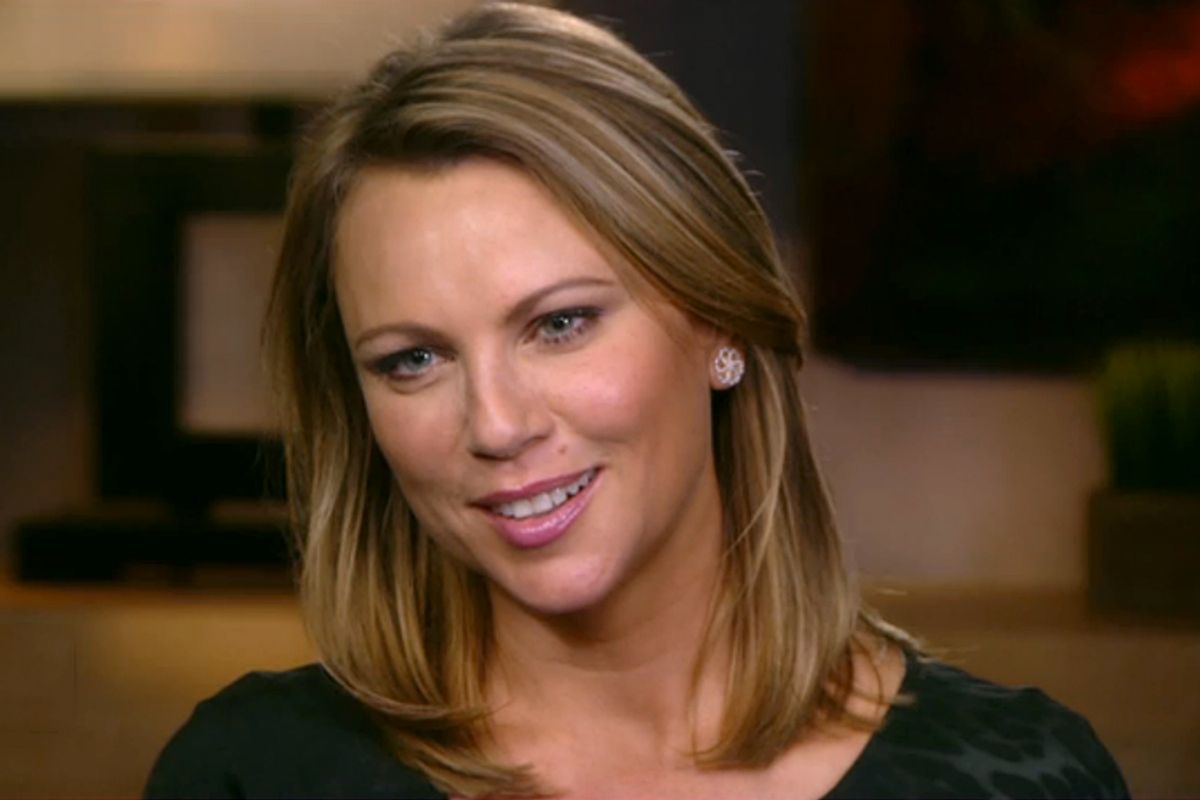Her career future is still tenuous in the wake of her discredited "60 Minutes" report on Benghazi last October, but New York magazine has problems with Lara Logan that go far beyond her credibility. Reading Joe Hagan's lengthy new feature called "Benghazi and the Bombshell," you'd think Logan's greatest flaw has always been trying to be a journalist while simultaneously being hot. Ladies, you can't have it all.
In a piece that fairly reeks of as much contempt for Logan's sexual allure as it does for her questionable ethics, Hagan describes her professional life as being marked by "two qualities that seemed to mix profitably, if uneasily: exceptional courage—and, of course, her looks" and notes that "her beauty cut several ways." This, combined with "her almost insatiable stomach for risk," would have consequences. There were the lovers – the "swashbuckling correspondent" Michael Ware, and Joe Burkett, the "boyfriend in the wings" she eventually wed. And then there was the assault, in February of 2011, while she was covering the celebrations in Tahrir Square.
At the time, CBS News described what happened to Logan as "a brutal and sustained sexual assault and beating" for which she was hospitalized for four days. But from the moment the news of her attack broke, pundits were swift to inject Logan's persona into the tale, saying that "Egyptian protesters apparently consummated their newfound independence by sexually assaulting the blonde reporter." The nature of the assault itself was also much speculated over, with the Village Voice musing that "It's also possible that she was sexually assaulted in every which way but rape. Yes, almost as bad, but still not as bad as rape." In an interview two months later, Logan herself described what happened that day, how her clothes were "torn to pieces." And she recounted, "For an extended period of time, they raped me with their hands. What really struck me was how merciless they were. They really enjoyed my pain and suffering. It incited them to more violence."
But in his narrative for New York, Hagan describes the same event as a scenario in which Logan was "unable to resist covering the events in Tahrir Square," a fascination that led to her being "assaulted by a mob of men who ripped off her clothes and groped her." A photo caption to the story helpfully mentions it was a sexual assault, but Hagan's description ends there. Instead, he notes that "her May 1 description of the incident earned Logan enormous goodwill from CBS colleagues" but made them hesitant to send her out into the field again. Because there's nothing like enduring a beating and sexual violence to earn a lady a little "goodwill" around the office.
Logan's beauty has been part of the discourse around her career since she began it – as a model. And in his feature, Hagan mentions the sexism Logan has also faced, the public commentary on her appearance and the dismissals of her seriousness for it. But he also actively participates in it, unquestioningly describing her "telegenic sexual charisma" as "a highly useful attribute for a woman who wants to succeed in TV journalism."
You want to rake Logan – and her colleagues at CBS News – over the coals for that "60 Minutes" debacle last fall? You want to call it an epic journalistic failure? I'm right there with you. You want to reveal, point by point, the lack of oversight that made that possible, and ponder why she still has a job? Have at it. For a 43 year-old woman to have had a complicated personal life and to have survived a sexual assault does not make her immune to professional criticism. Those things should not, however, be treated as evidence of her untrammeled ambition. That's simultaneously lazy and despicable. So if you're looking for metaphors, call her a loose cannon if you must. But spare us the sexist "bombshell" nonsense.



Shares